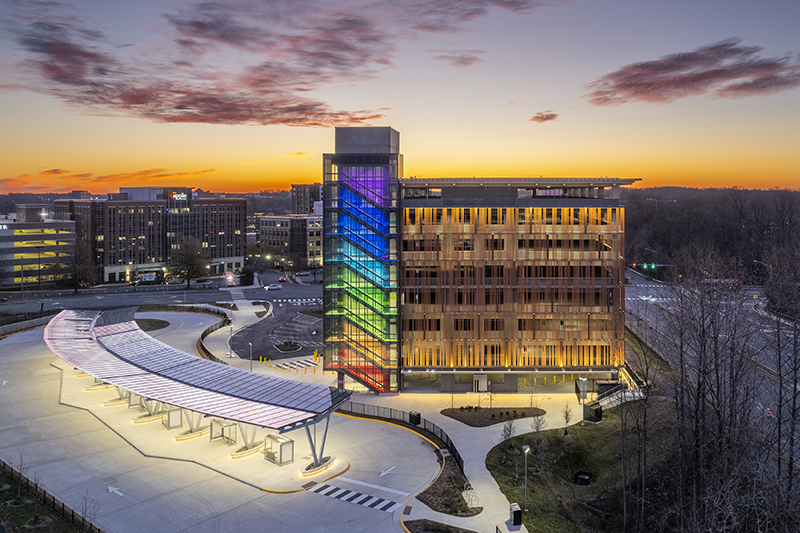Smart Choices for Specialty Finishes
Unique look, high performance and sustainability

With commercial fenestration and framing systems, performance counts and appearance matters. Most architects design with color in mind, and many strive to differentiate projects with specialty finishes. You can help your customers find a unique look without compromising performance or sustainability.
Anodize finishes
Anodize finishes emphasize the natural metallic look of aluminum. “Clear” anodize is an uncolored finish. After its initial anodization, the aluminum can continue its finishing process through an optional color tank. Darker colors are created by extending the immersion time and increasing metal deposition.
Specialty copper and bordeaux anodize finishes require a second color tank, where actual copper is deposited into the aluminum pores. Bordeaux anodize leans toward rich burgundy tones and is created using organic tin and copper metals in the anodizing process.
The rich metallic tone of copper anodize resembles that of a copper penny and will keep its original shine for years to come. Copper anodize finish will not stain adjacent building materials with salt run-off or patina with time. Compared with actual copper, anodized aluminum is one-third of the weight, a fraction of the cost and more durable.
Anodized architectural products that meet AAMA 611 will provide the highest performance finish.
Anodized aluminum is an inert material that is noncombustible and poses no health risks, making it a smart choice for projects with sustainability and wellness-focused building initiatives and LEED certification. These benefits are further enhanced when paired with secondary, recycled aluminum material.
Some anodize finishes have earned a Declare Label as Living Building Challenge (LBC) Red List Free. This means they’re in full compliance with the highest level of LBC criteria, and are recognized by the U.S. Green Building Council’s LEED Rating System and other green guidelines.
Architectural paint coatings
Architectural paint coatings provide a nearly unlimited choice of colors. Specialty painted options include spattercoat and textured treatments, and metallic and mica finishes.
Spattercoat combines several color selections in patterns to resemble marble or other decorative designs. Textured coatings add a tactile element to aluminum building products, such as mimicking shades of terra cotta or replicating wood species, while providing the benefits of aluminum. These biophilic-inspired options preserve an intentional connection to the original natural material to create a comforting, immersive sensory experience for occupants.
Appealing to visual experience, metalics and micas add vibrancy to the coatings. The metal flakes within the pigment catch the light to create a shimmer or sparkle. Selecting darker, bronze-tone colors generally offers the most consistent appearance, especially on large surface areas.
More information
For the highest performance on exterior-facing aluminum products, choose paint finishes that meet AAMA 2605 specifications. To comply with project’s sustainability goals, check with your finishing services provider to ensure VOCs are safely captured and destroyed before the finished material leaves the factory.
Whichever color or specialty finish your customer wants, an experienced finishing partner can help you make smart choices and achieve the desired result.


